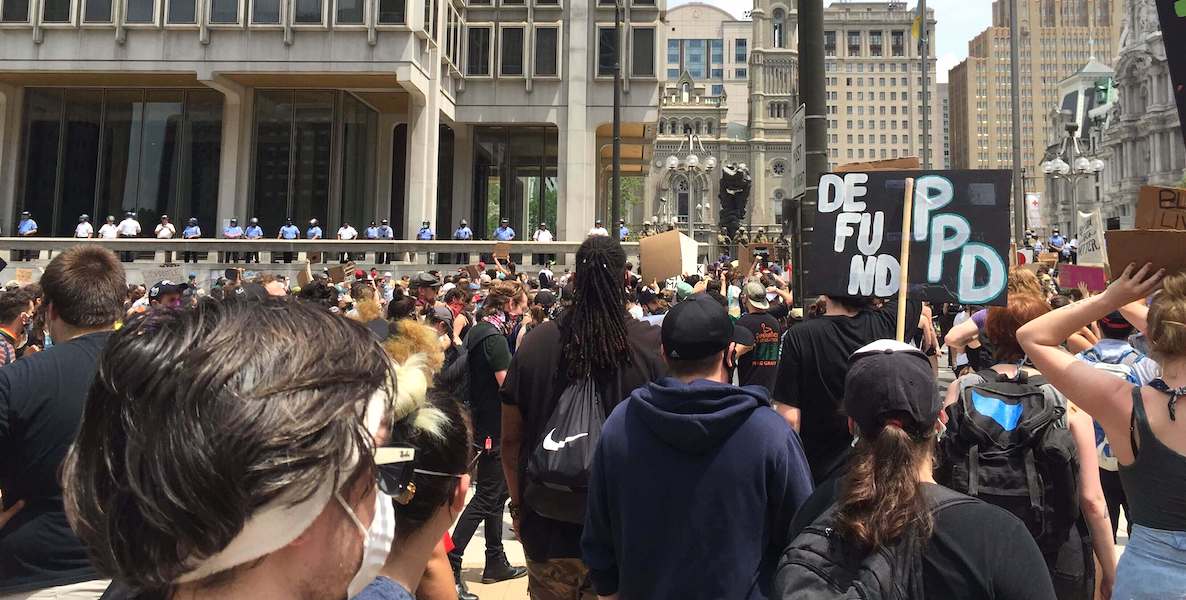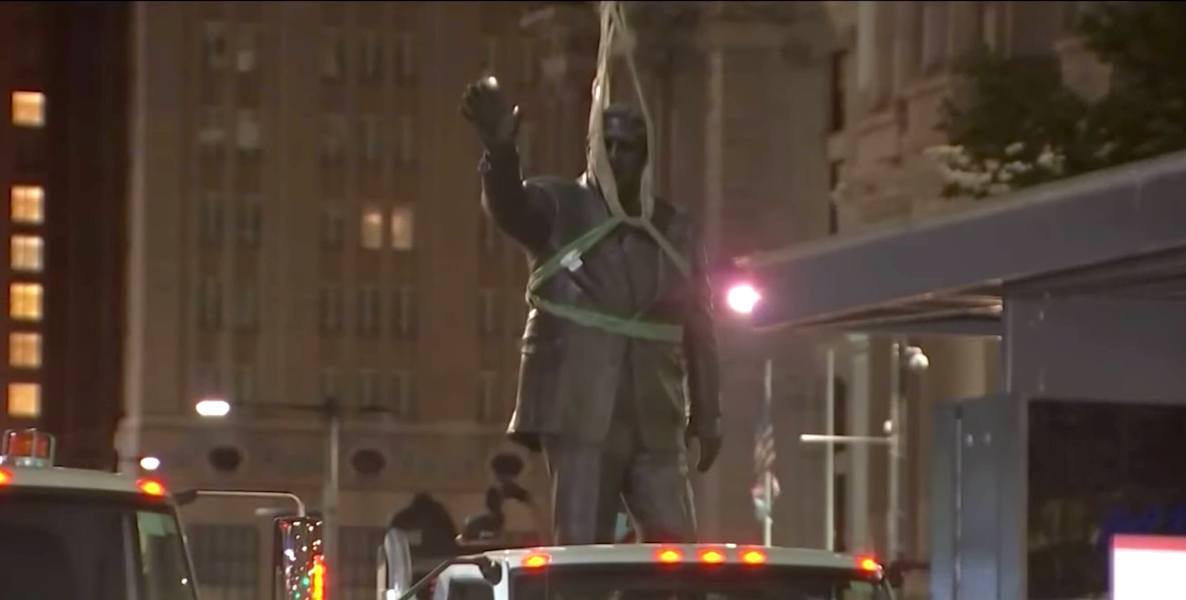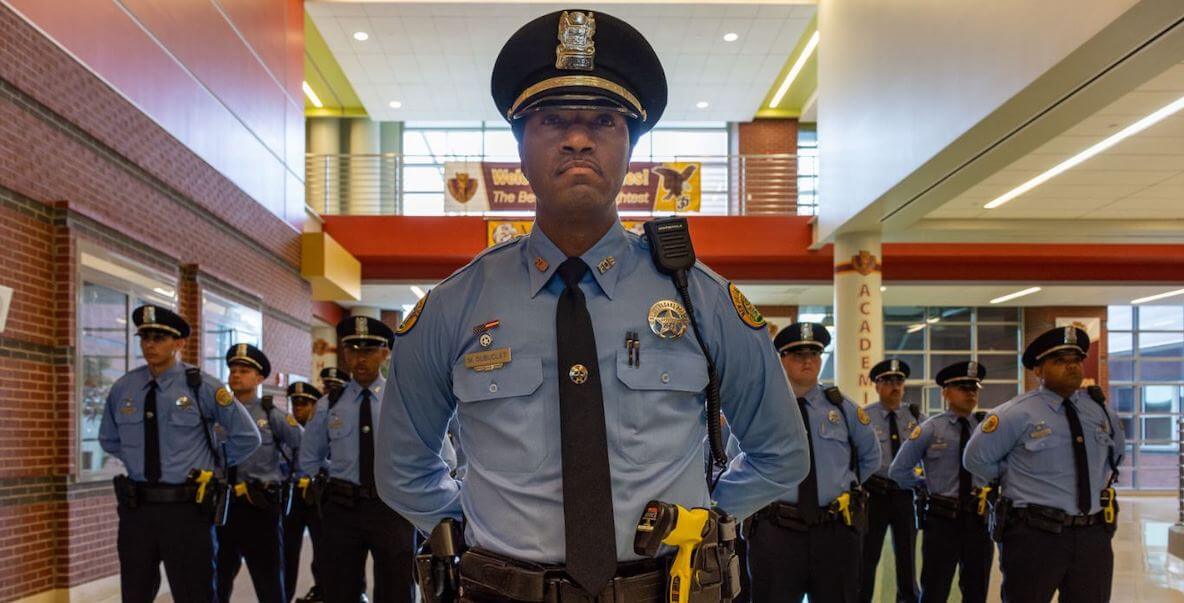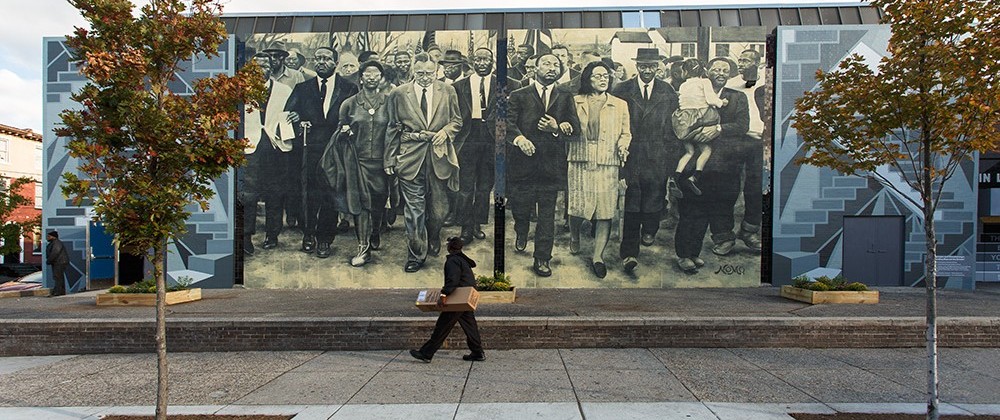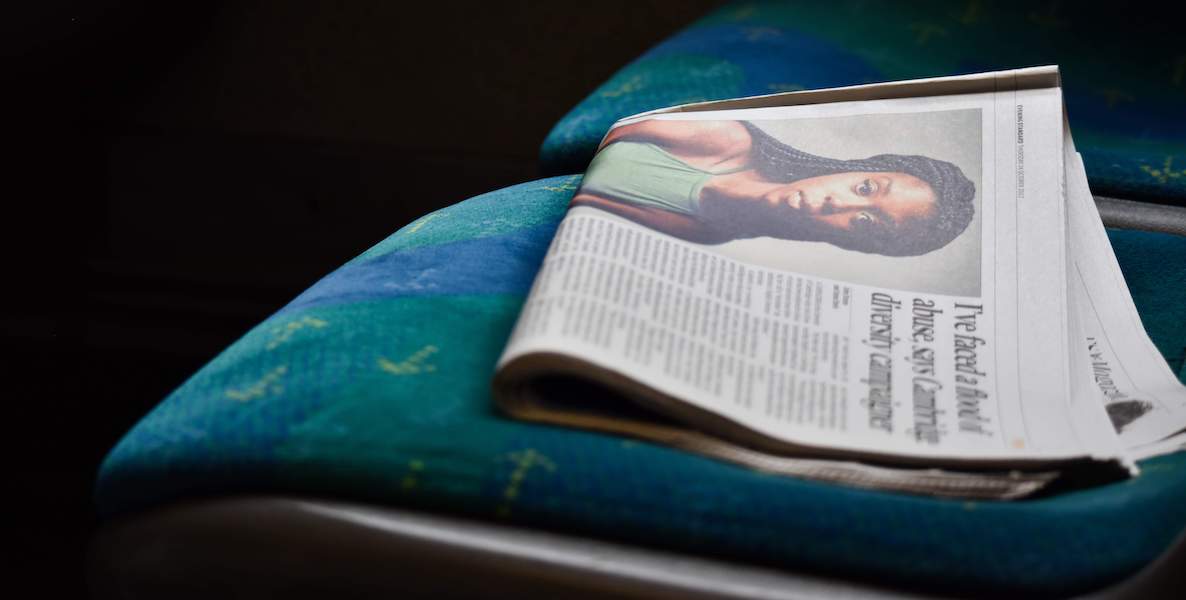![]() It has long been held that our news is solely objective, as if the chroniclers of our public story are mere stenographers, telling us what happened, and why.
It has long been held that our news is solely objective, as if the chroniclers of our public story are mere stenographers, telling us what happened, and why.
This was always a fiction, of course, a tenet that came of age in the mid-19th century because advertisers—not readers, mind you—objected to point of view. Even as the news industry quaked, it was taken as a matter of faith that the practice of delivering the news had to be not only fair, but objective.
Perhaps the most absurd example of this ideology, for that is what it has become, came when Len Downie, then-editor of the Washington Post, copped to not voting, for fear of appearing biased, an example many journalists follow still.
This instinct condescends to and misreads its audience; news consumers don’t object to bias so much as the bullshit denial of it. I’ve always advanced the proposition that fairness and transparency of point of view does more to enhance credibility than pretending to be a “just the facts, ma’am” automaton.
That’s why, on one level, it’s been heartening to see journalists shed their self-imposed shackles and become newsroom activists when it comes to race and racial empowerment of late. On the other hand, there is a risk: If agitating for social justice within our newsrooms leads to less public debate rather than more, what happens to the vital role of journalist as arbitrator between competing ideologies?
Let’s dive into a few case studies. You know about the blow-up at The New York Times, when an op-ed by Senator Tom Cotton, calling for the use of troops in American cities in response to protests and looting infuriated the newsroom and led to the ouster of a white male editor. Here in Philly, a terribly tone-deaf headline—“Buildings Matter, Too”—led to a walkout of some 40 journalists and the jettisoning of another white male editor-in-chief, Stan Wischnowski.
Journalism should always be sensitive, but it should also err on the side of more speech, more debate, more dialogue, more transparency.
In Pittsburgh, a young African-American reporter at The Post-Gazette (a Temple alum!) posted a photo of a city street with 50 tons of garbage strewn across it, with this observation: “Horrifying scenes and aftermath from selfish LOOTERS who don’t care about this city!!!!!…. oh wait sorry. No, these are pictures from a Kenny Chesney concert tailgate. Whoops.”
It was a clever, entertaining remark, but she was promptly pulled from covering protests thereafter, presumably for violating ridiculous standards of objectivity, leading to staff revolt.
A fight is on for the soul of our newsrooms, it seems, which is probably a good thing—introspection and correction being the hallmarks of the mess that is Democracy. But there is peril in that fight, as well. On one side, there is danger in the perpetuation of a largely white, male-driven culture of objectivity, which, in practice, too often translates into an embrace of all things status quo; on the other, there is the troubling specter of the migration of cancel culture to the newsroom, complete with its outraged banishments and its shedding of more civic heat than light.
![]() As gateways to the culture’s town square, newsrooms—like universities—are where these issues should be debated and dissected. But, as The Coddling of the American Mind: How Good Intentions and Bad Ideas Are Setting Up a Generation for Failure by Greg Lukianoff and Jonathan Haidt persuasively chronicles, campuses have turned into “safe spaces” where young adults are shielded from ideas that might offend them, and where anyone deviating from that intellectual protection racket gets punished.
As gateways to the culture’s town square, newsrooms—like universities—are where these issues should be debated and dissected. But, as The Coddling of the American Mind: How Good Intentions and Bad Ideas Are Setting Up a Generation for Failure by Greg Lukianoff and Jonathan Haidt persuasively chronicles, campuses have turned into “safe spaces” where young adults are shielded from ideas that might offend them, and where anyone deviating from that intellectual protection racket gets punished.
The result is often a culture where one is trained to think twice before speaking up—lest you be called “insensitive” or “triggering.” (One of the best, and most horrifying, examples of the trend is the demand a few years ago by students to jettison the teaching of rape law, because, in part, the word “violate” triggers trauma).
If the same coddling is now overtaking our newsrooms—and, thus, our news—we run the risk of answering ideology with ideology. It’s what the writer Andrew Sullivan is getting at, a point of view he’s been pilloried for on Woke Twitter.
This new orthodoxy, he writes in New York magazine, “goes further than suppressing contrary arguments and shaming any human being who makes them. It insists, in fact, that anything counter to this view is itself a form of violence against the oppressed. The reason some New York Times staffers defenestrated op-ed page editor James Bennet was that he was, they claimed, endangering the lives of black staffers by running a piece by Senator Tom Cotton, who called for federal troops to end looting, violence, and chaos, if the local authorities could not. This framing equated words on a page with a threat to physical life—the precise argument many students at elite colleges have been using to protect themselves from views that might upset them. But, as I noted two years ago, we all live on campus now.”
Of course, the mere fact that Sullivan has written his words, that I have quoted them, and that I’m holding forth with my point of view to you right now, at least proves Sullivan premature: The verdict is not in yet. Debate still lives. It’s just that, in order to wade in now, you might have to have the fortitude to get called some vile names on Twitter.
So it’s on all of us to engage, and to resist the temptation to question the motives of those who say something that might make us uncomfortable. The push and pull history of America’s still-embryonic experiment is replete with examples of this notion of answering offensive speech with better speech, as when the Courts agreed with the ACLU in 1977 that Nazis had the right to march in Skokie, Illinois, a predominantly Jewish town with a high proportion of survivors of the Holocaust.
If agitating for social justice within our newsrooms leads to less public debate rather than more, what happens to the vital role of journalist as arbitrator between competing ideologies?
The Illinois Supreme Court, the United States Court of Appeals, and the United States Supreme Court didn’t say that those citizens needed protection from hateful, traumatic ideas. Instead, they found that hate speech is protected speech, because more speech is part and parcel of a vibrant Democracy, and that, in the marketplace of ideas, expressions of bigotry give rise to their own refutation.
When good-hearted people hear hate, in other words, they tend to opt for love. To suppress speech is to give it power, just as, as Haidt and Lukianoff make clear, to shield students (or journalists!) from triggers is to run afoul of therapeutic tenets that would have them deal head-on with their trauma.
“The economic model for journalism is fucked, but if the intellectual model is also willingly shot to hell, then the profession doesn’t have much of a future,” says Zack Stalberg, the longtime, legendary editor of The Daily News, who I caught up with last week, where he was riding horses, cutting cattle, chasing steer, drinking and smoking cigars in his Santa Fe retirement.
“That Inquirer headline was stupid and dull, sure, but now you’ve got people thinking something and then thinking they’re not free to say it. If the news becomes so fucking safe that it’s just smart people having dumb, censored conversations, all you’ve done is what Trump wishes he could do: Silence divergent views. That creates a counter-reaction, which I feel out here, in the real world. People are like, ‘Wait a minute, reporters didn’t agree with Tom Cotton and got an editor fired for publishing a Senator’s op-ed? Shouldn’t The New York Times be better than this?’”
Stalberg, as usual, is dead-on when he observes that, like democracy itself, any creative enterprise requires freedom to flourish. (The ridiculous “Buildings Matter, Too” headline was replaced with something right out of the Politburo: “Damaging Buildings Disproportionately Hurt The People Protesters Are Trying to Uplift.” Seriously.) And he’s right that the recent newsroom uprisings could portend a chilling effect.
But what old, white, dutiful liberals like Stalberg, Sullivan and, yes, yours truly might miss is that there is one group in our newsrooms that we’ve disproportionately asked to bear more than the rest of us in terms of tolerance. What if we’re all Branch Rickeys, and Jackie Robinson has grown tired of turning the other cheek?
![]() In that sense, the reaction to the Inquirer’s “Buildings Matter, Too” headline was not an isolated incident, according to Eric Deggans, NPR media critic, author of Race-Baiter: How the Media Wields Dangerous Words to Divide a Nation, and Chair of the Media Monitoring Committee of the National Association for Black Journalists.
In that sense, the reaction to the Inquirer’s “Buildings Matter, Too” headline was not an isolated incident, according to Eric Deggans, NPR media critic, author of Race-Baiter: How the Media Wields Dangerous Words to Divide a Nation, and Chair of the Media Monitoring Committee of the National Association for Black Journalists.
“I’m sure that that sort of snarky way of saying ‘All Lives Matter’ was just the last fucking straw,” says Deggans, whose TED Talk on how to talk about race ought to be required viewing. “I’m sure it was, like, ‘What do we have to do to get you to consider what you’re doing?’”
Deggans actually walks me through a history of misdeeds when it comes to race on the part of newspapers, and it’s a history that informs this moment in a way that goes well beyond the current day challenges around newsroom diversity, especially at the management level.
Numerous newspapers, for example, have apologized in the last decade for their coverage, or lack thereof, of the Civil Rights Movement, including the Lexington (KY) Herald-Leader and the Hartford Courant; the Orlando Sentinel has apologized for its horrifying role in the 1949 case of the Groveland Four, in which four young black men were wrongly accused of raping a young white woman.
Pawns of the white establishment, newspapers were often co-conspirators in oppression. Or they just weren’t interested. As legendary Inquirer editor Gene Roberts has acknowledged, newspapers missed arguably the biggest story of the 20th Century—the Black migration north, chronicled so beautifully in Isabel Wilkerson’s The Warmth of Other Suns.
As time went on, the journalistic missteps became less overt, but troubling nonetheless. Deggans cites two Daily News covers from a couple decades ago. One had to do with a TV show called American Dreams, about a white suburban family in the American Bandstand era. The cover shot was of the family under the headline: “Just Like Us.”
“I don’t give to political campaigns or put yard signs up, but our job as journalists is to curtail big institutions when they trample on the rights of citizens,” Deggans says. “Protesting racism is really advocating for a journalism value: fairness and equity.”
Shortly thereafter came a story about criminals who had skipped out on their bail. Some 15 black and brown faces stared out from the cover, under the headline: “They’re Out There.” Obviously, the juxtaposition of those two treatments said something about who was “us” and who was “them.” But Deggans’ point goes deeper.
“The story about parole violators didn’t even talk about race,” he says. “The editors might have been well-meaning liberals, but ‘colorblindness’ is actually a way to avoid talking about race, and in their colorblindness, they missed the whole story. Why were all those faces black and brown? You’ve got to ask those questions, journalistically.”
Deggans is on to something: That the answer is journalistic. All those editors and reporters at The Inquirer, Times and Post-Gazette who protested this past month? They were, he says, standing up for journalistic values.
“I don’t give to political campaigns or put yard signs up, but our job as journalists is to curtail big institutions when they trample on the rights of citizens,” he says. “Protesting racism is really advocating for a journalism value: fairness and equity.”
![]() It’s a good point. But what if that journalistic value conflicts with another, such as accuracy? Last week, an Inquirer AP story on the tearing down of statues actually carried this subhead: “Among the targets was a bust in San Francisco of Civil War Gen. Ulysses S. Grant, an enslaver.”
It’s a good point. But what if that journalistic value conflicts with another, such as accuracy? Last week, an Inquirer AP story on the tearing down of statues actually carried this subhead: “Among the targets was a bust in San Francisco of Civil War Gen. Ulysses S. Grant, an enslaver.”
Ulysses S. Grant was no enslaver; as chronicled in Ron Chernow’s brilliant biography, he was the General who won the Civil War, and the president who extended voting rights to former slaves, deployed the U.S. military to dismantle the Ku Klux Klan, and created the Justice Department to enforce new civil rights laws. He was raised in a rabidly abolitionist family; his wife’s family did own a slave, who Grant set free before the War.
That Grant’s CV can result in that know-nothing subhead in 2020 has to make you question whether what we’ll be getting from newsrooms from here on out are smart attempts to get at deeper truths, or just thinly-veiled modern-day political sloganeering. Now that the constraints of objectivity are (thankfully) lifting, the not-so-dirty little secret of newsrooms might become even more apparent: That they are overwhelmingly comprised of political liberals.
A recent survey finds that only 7 percent of full-time journalists are Republicans. A poll during the 1992 presidential election of newspaper newsrooms found that something like 85 percent of journalists voted for Bill Clinton. After the “Building Matters, Too” headline fallout, Inquirer columnist Jenice Armstrong wrote: “I was initially attracted to this industry because I thought journalists were more progressive than people in other industries.”
While we talk all the time about increasing newsroom diversity, as we should, there is precious little talk of the importance of diversity of thought. One longtime journalist tells of a moment when, in an editorial meeting, he happened to mention that he’s a political conservative. “I had people coming up to me after, saying, ‘Really? Geez, I’d love to talk to you about that some time,’” he said. “They were looking at me like I was some exotic animal in the zoo.”
All of this requires today’s newsroom leaders to walk a fine line: A commitment to greater diversity and inclusion, especially at the management level, and a doubling down on fueling the marketplace of ideas, with points of view bumping into each other all over the place. That’s what is so compelling about Deggans’ embrace of racial activism in the newsroom as consistent with journalistic values.
Well, what if that advocacy takes place within the journalism itself? In the aftermath of the “Buildings Matter, Too” headline, the Inquirer journalists who led the protest explained, as Deggans suspected, that it wasn’t just about one headline.
“It’s no coincidence that communities hurt by systemic racism only see journalists in their neighborhoods when people are shot or buildings burn down,” they wrote. “It takes commitment to correct and improve that relationship.”
A fight is on for the soul of our newsrooms, it seems, which is probably a good thing—introspection and correction being the hallmarks of the mess that is Democracy.
In that critique is a call for a very specific type of reform: Go out and cover the crap out of Philadelphia and race, using all the amino acids of great storytelling at your disposal, including point of view. We all would have been more edified if those 40 some-odd journalists had chronicled the story they were part of as they were in it.
And, instead of releasing a corporate-speak statement about editor Stan Wischnowski’s fate, the suits who run the place would have been more in keeping with the unique nature of the free press tradition if they’d told a diverse group of writers to cover not only the dust up, but also the context of the Inquirer and race, without fear or favor.
There are precedents for this, of course. Back in 1981, when Washington Post reporter Janet Cooke was revealed to have wholly made up stories that won her a Pulitzer Prize, legendary editor Ben Bradlee had his reporters cover the shit out of the screwup, just as when they covered Watergate. We’re as much of an establishment institution as the White House, Bradlee seemed to be saying, and we can use just as much sunlight to disinfect us as we applied to Nixon. It also made for good business, as it bolstered the paper’s credibility with its readership.
Funny, isn’t it, how much we’ve talked about police reform these last weeks, but there’s been nary a mention of media reform? Oh, The Washington Post, and others, have rushed to announce diverse slates of new hires, which is cool, but it has a wishful feel to it: See, we’re hiring black and brown folk, okay?
My hope is that this moment goes beyond that script, and starts a more holistic conversation about what the news is and ought to be going forward, because the underlying philosophical tenets of journalism have rarely been held up to inspection. It’s worth precisely what you’re paying for it, but here’s my prescription:
First, end the pretense of objectivity. Cover the news from all different angles and perspectives, critically engage ideas, and trust the news consumer to find his or her way without your institutional paternalistic guidance or protection.
To do that, though, you first have to welcome all those different perspectives inside the tent. As with the police, that’s going to require union reform. One of the reasons newsrooms haven’t met widespread diversity and inclusion goals is because of the way many collective bargaining agreements are structured. When there are layoffs, the last hired (which tend to be the younger, more diverse staffers) are the first to go. (The Inquirer has made some advances in this regard lately.)
And, critically, you’re going to have to zealously guard against the encroachment of political dogma, as well as soft, or just-plain-factually wrong, thinking; Ulysses S. Grant as “enslaver” is an example of all three. Moving beyond objectivity ought not mean that newspapers become print versions of FOX News. Editors must still ensure that facts and deep reporting carry the day, while also insisting that reporters draw conclusions from their reporting, rather than just fall back on tired “on the one hand” and “on the other” equivalencies.
About 25 years ago, I sat in on an Inquirer editorial meeting when I was writing a magazine story on its then-editor. A woman in Municipal Court had sued a judge for sexual harassment, and a tedious 45-minute debate ensued over whether to name her in the paper. On another floor of the same building, Daily News editor Stalberg was having the exact same discussion. Only his reporter provided an additional data point. The woman wanted to be named; this was a public cause for her. The next day, the Inquirer protected someone who hadn’t sought protection.
Journalism should always be sensitive, but it should also err on the side of more speech, more debate, more dialogue, more transparency. There’s a reason why the press is the one industry given explicit rights in our founding document. In these fraught, fractured times, storytelling that intimately introduces one Philadelphian to the other might just be our best hope to awaken a sense of empathy in the American spirit. How about we do that?
Photo by Julia Sabiniarz / Unsplash


